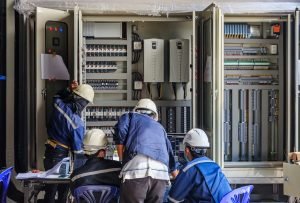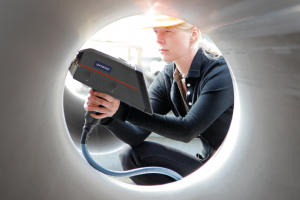Are you comparing the two advanced inspection techniques—TOFD vs PAUT in Malaysia to apply for your evaluation? The two testing methods are extremely popular due to their detailed inspection, excellent flaw detection, and increased inspection speeds.
Phased array ultrasonic testing (PAUT) and time of flight diffraction (TOFD) are two separate parts of a holistic non-destructive inspection technique. Read on to know more about TOFD vs PAUT in Malaysia.
What is Phased Array Ultrasonic (PAUT)?
Also referred to as phased array UT, PAUT is an innovative, non-destructive evaluation technique. PAUT makes use of a series of ultrasonic testing (UT) probes comprised of multiple small components, each of which is pulsed separately with computer-calculated timing (or “phasing”).
The beams from a phased array probe can be electrically swept across different angles, focused at varying depths, or integrated along the length of a long array without moving the probe itself.
However, the conventional single-element probes must be operated manually to cover greater areas. Also, you can put them on a semi-automated or motorised scanner for maximum productivity.
What is Testing Time of Fright Diffraction (TOFD)?
Meanwhile, a pair of ultrasonic probes are placed on either side of a weld joint or other areas of interest in time-of-flight diffraction (TOFD) systems. Then, a transmitter probe produces an ultrasonic pulse which a receiver probe will receive on the other side.
The signals that the receiver probe detects in an undamaged portion come from two waves: a lateral wave that travels along the surface and a far wall wave (back-wall reflection).
Both the bottom and top tips of the crack distort the ultrasonic sound wave in the event of a discontinuity (crack or corrosion). The depth of the crack tips can be determined automatically by trigonometry software using the measured time of flight of the pulse.
TOFD vs PAUT: Which Should You Choose?
In the choice between TOFD vs PAUT, one must understand the significant distinction between the two.
The main difference between the two techniques lies in the response of the physical principle (Ultrasound), creating a discontinuity in the material. While TOFD relies on the reaction of the diffracted wave at the tip of an indicator, PAUT depends on the reflection of an ultrasonic wave.
To put it in another way, TOFD measures high- and low-amplitude waves that deflect off the tips of flaws and defects, but PAUT only records high amplitude waves returning from the back of the asset.
Despite their differences, in regard to TOFD vs PAUT, some NDT technicians believe that a combination of both might result in the best solution.
Working together, the two techniques complement each other’s strengths and weaknesses to deliver a more effective, rapid and accurate solution.
Read More: Non-Destructive Testing (NDT) Methods & Benefits In Malaysia
Professional TOFD and PAUT Services in Malaysia
Both Time of Flight Diffraction (TOFD) and Phased Array Ultrasonic Testing (PAUT) services demand professionals’ help to ensure the accuracy of test results.
At Xpert Engineering, we provide a comprehensive suite of NDT services to help businesses simplify business operations.





